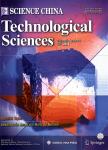Study on the relative radiometric correction of CBERS satellite CCD image
Study on the relative radiometric correction of CBERS satellite CCD image作者机构:China Center for Resource Satellite Data and Application Beijing China
出 版 物:《Science China(Technological Sciences)》 (中国科学(技术科学英文版))
年 卷 期:2005年第48卷第S2期
页 面:12-28页
核心收录:
学科分类:0810[工学-信息与通信工程] 08[工学] 081001[工学-通信与信息系统]
主 题:CBERS satellite CCD camera relative radiometric calibration relative radiometric correction assembly test.
摘 要:The main payload on CBERS-01/02 of China-Brazil Earth Resources Satellite (CBERS) is a push-broom CCD camera with moderate spatial and radiant resolution. Because at lab the data for calibration at satellite assembly stage were unable to be collected, and also because the onboard calibrator after launch was in a different state from imaging, the calibration of CCD image got a series of difficulties involved. In practice, two methods are used in the processing on the ground station: One is extracting calibration data by statistics from the image itself, and the other is the method of histogram match. It was proved that the latter can calibrate the image much better, because it can remove the effect of unstable response of the camera largely and also can overcome the nonlinearity of the camera basically by using Look-Up Table (LUT) calculated from histogram statistics of different temporal images. Considering the problems of CBERS-01, a lot of calibration tests were done before the launch of CBERS-02, in which a set of lab coefficients for relative calibration was formulated after the data collection by using integration-hemisphere in the stage of satellite assembly test. During the on-orbit test, it was found that the calibration result from such coefficients was not satisfying, especially there being response difference between 3 detector arrays, which was attributed to the unstable dark currents of the CCD camera. This paper comes up with a statistic method to remove such response difference. In this method the middle detector array was used as reference to find the response differences of adjacent similar features between these arrays and it was proved to have a broad adaptability.



